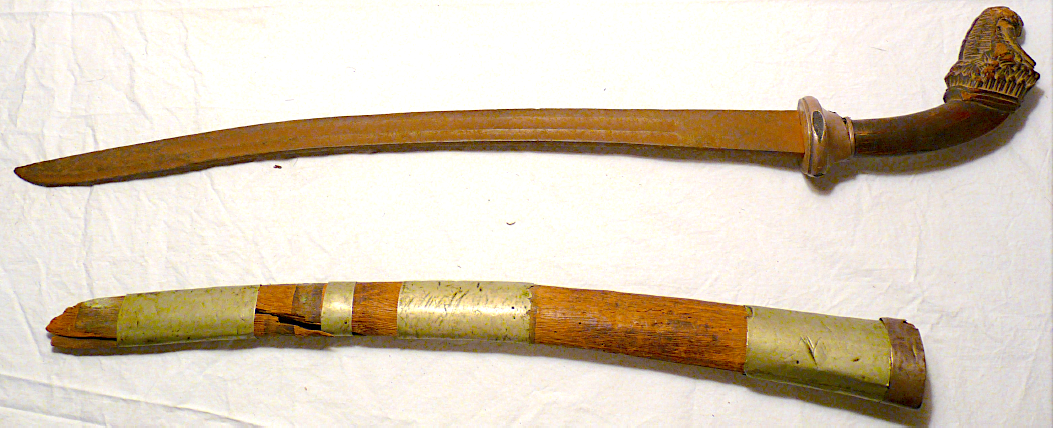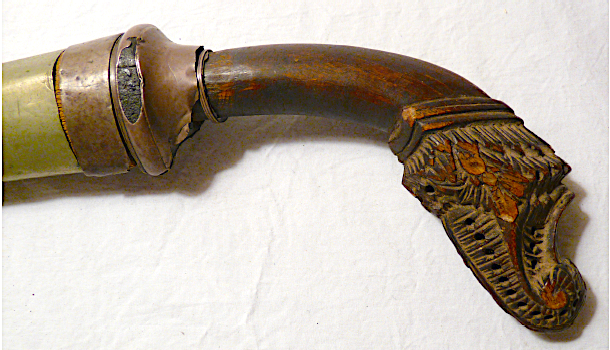Lombok Pedang
Though parang is a collective term for swords, large knives and machetes traditionally used all over Indonesia and Malaysia, it is more properly a short saber from either Sumatra or, as in this case, from Lombok. As the typical vegetation in Southeast Asia is woodier than in South America, the parang is designed for a stronger chopping or slicing action with a heavier blade and a balance further forward of the handle than a machete; the blade is also heavily beveled to prevent it from catching in the cut.
A parang is differentiated from other knives mainly by its blade length; its blade is usually 10–24 inches (25–61 cm) long; a blade that is 10 inches and shorter is called a pisau (knife) and a blade that 24 inches or longer is called a pedang (sword). The Lombok parang has three different edges: the front is very sharp and used for skinning, the middle is wider and used for chopping, and the back end (near the handle) is very fine and used for carving. A parang's hilt is normally made out of wood or horn, with a wide end to prevent slipping in wet conditions; in Lombok it is also carved in the shape of an animal of particular ritual significance. The end of the hilt of this parang is in the form of a very stylized cockatoo head, which is the most common choice, with no other decoration, while the scabbard is of plain wood banded with steel. Both of these elements together suggest that it was intended as a utilitarian blade.
Purchased by Sally Nelson from Oyster House Antiques on 4 March 1998, $125.40
Carved wood, steel, iron, wire; 12 x 61cm, blade 46.
Nelson South East Asia Collection © 2025

